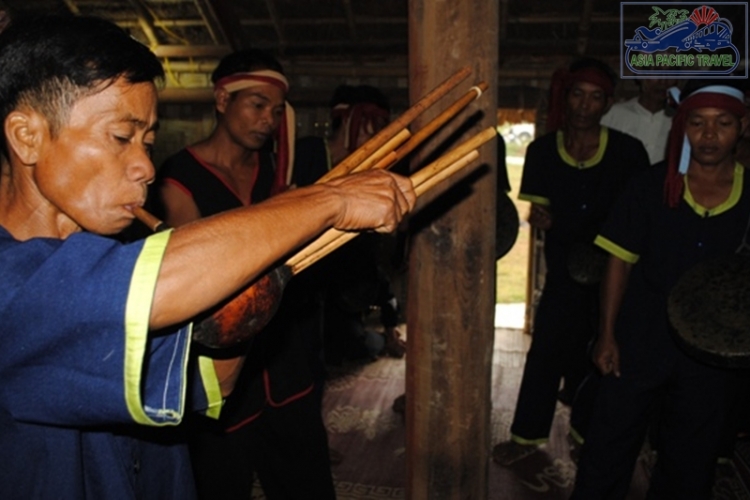The Raglai prefer to build their stilt houses on high land areas near a water resource. Each hamlet has several stilt houses and the villagers are of the same clan.
Traditionally the Raglai perform a ritual to find suitable land on which to build a stilt house. The mistress puts 7 grains of rice on the ground and upturns a bowl on them.
After 3 days and nights, she removes the bowl. If 7 grains remain there, it’s a good place to live. If some grains have disappeared, she will find another place to build.
Stilt houses of the Raglai are made of wood, rattan, bamboo, and leaves. All members of the family are involved in preparing materials and building the house.
Doctor Thanh Phan, a researcher of Raglai culture, said, “Most stilt houses of the Central Highlands groups are imposing. But the stilt houses of the Raglai are smaller and located at the foot of the mountain, surrounded by dense forest. The location of their hamlets and stilt houses has helped them preserve their unique culture.”
A house is built on stilts approximately 1 meter above the ground. The roof is built separately and then set on the house frame. The roof is shaped like an upturned boat, which, experts explain, is a cultural blending of Austronesian groups.
Inside the house, musical instruments are hung on the left wall and spearheads and knives are hung on the right wall. A central pillar supports the roof. The Raglai consider it a spiritual pillar, a way for their ancestors to connect with their descendants during worshiping ceremonies.
There are several wood stoves in a stilt house and the main stove is always lit. Beside the stove, old people tell children the epics, tales, and folksongs of their group.
Raglai people teach the younger generation epics and folksongs anywhere they can, but the most sacred place is next to a wood stove. Listening to old people reciting epics and folksongs, young people can deeply understand the soul of the Raglai culture.
The Raglai have several festivals each year, which are occasions for grandmothers and parents to teach their children morality, etiquette, and culture.
Chamale Nang shared, “I’m proud of my group, which has many stilt houses. At festivals we play Ma La gongs and the Chapi musical instrument. These events help us understand our culture.”
Stilt houses of the Raglai are simply made but strong and durable. In deep forests, the Raglai live in harmony with nature and preserve their time-honored cultural uniqueness.
Source: VOV






































































































